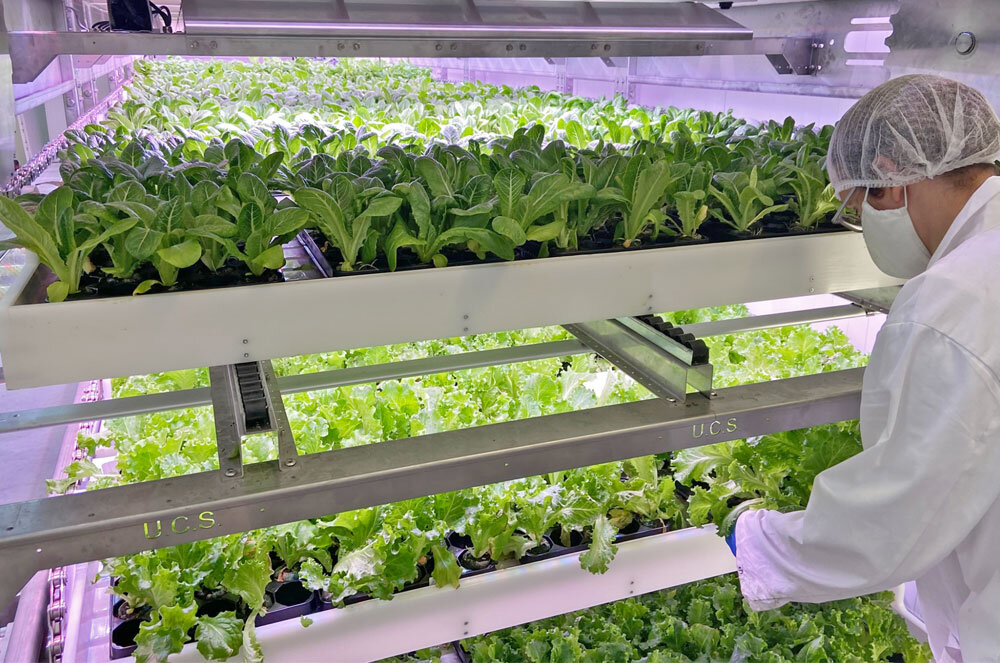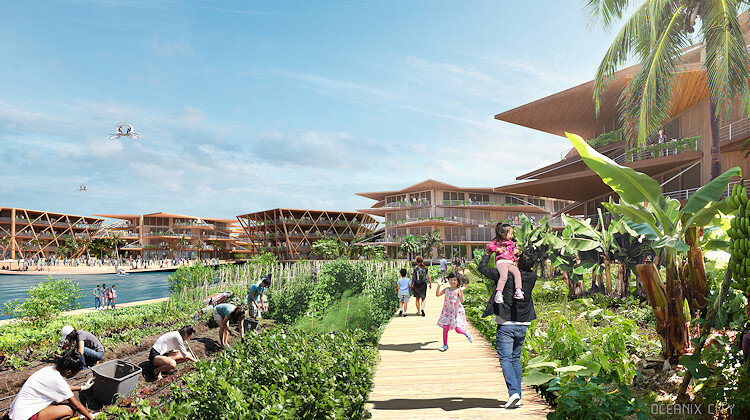Apr 19, 2021
10 New Trends In CEA In 2021 And Beyond

The world of controlled environment agriculture (CEA) is continuing to develop at an accelerated rate. In line with Agritecture’s mission “to accelerate climate-smart agriculture strategies,” we’ve decided to share our top predictions for the future of CEA for 2021 and beyond. This post is a follow-up to Agritecture’s post on the “10 New Trends In Hydroponics: What To Expect In 2017 And Beyond”.
Here are our top 10 predictions:
#1: Strawberries
In a sea of vertical farmers producing leafy greens, we’ve noticed sights shifting to strawberry production. While strawberries were initially difficult to produce given on-the-ground concerns like pests, fungal diseases, and weeding, growing vertically has allowed for easier harvesting and limited damage to the fruit. According to Agritecture’s Founder & CEO, Henry Gordon-Smith, “Strawberries are the hot new product for indoor growers because they can charge a lot for the best ones, they’re desired year-round, and the freshness and flavor are very noticeable,” being made more achievable by vertical farming.

Image sourced from Oishii
As of late last year, Driscoll’s and Plenty announced a partnership to grow strawberries indoors. We’re seeing increasing interest in high-quality strawberries with Oishii Berry’s $50m Series A fundraising for bee-assisted, carbon-neutral strawberry cultivation. In response to this growing interest, Agritecture’s Director of Operations, Yara Nagi, comments that “there is an interesting opportunity for growing strawberries hydroponically, especially for countries that import a majority of their strawberries. In order for strawberries to be exported to another country, they typically have to be harvested early. So, being able to grow them locally and in a controlled environment translates to better quality strawberries with a longer shelf-life. Other than the fact that growing strawberries hydroponically has become more and more efficient, the price point for strawberries can be relatively high when compared to other products grown in an indoor environment.”
#2: Breeding Seeds For Vertical Farms
As of recently, we’ve noticed a growing interest in breeding seeds for vertical farms. In February 2021, Kalera acquired Vindara Inc., a company developing non-GMO seeds for vertical indoor farms. Kasveista’s story of producing high-quality seeds and seedlings of open-source varieties for vertical farming similarly showcases this change in the industry.
Agritecture’s Lead Agronomist, David Ceaser, comments that “to date, crops grown in vertical farms have been grown using plant genetics developed for outdoor or greenhouse production. Environmental conditions in vertical farms are quite different from those environments, and so, plants respond differently. As genetics for vertical farms are developed, yields of current crops will improve greatly, and new crops will be successfully introduced into the vertical farm platform.”
#3: Fully Automated Vertical Farms

Image sourced from Urban Crop Solutions
If you know anything about vertical farming, you know that labor is expensive and that this form of intensive agriculture requires highly skilled labor. According to Gordon-Smith, “new fully automated vertical farms are emerging” to respond to this labor challenge. He questions whether they will actually work, given that costs are high and the technology is new. Does this development in vertical farming mean fewer jobs or a more skilled workforce? Fully automated vertical farms are inevitable but will they pay off?
In September 2020, Agritecture’s new equipment partner, Urban Crop Solutions, launched their Module-X Automated Vertical Farm.
#4: Floating Farms
It’s always a struggle to find open space for agriculture in built-up urban areas. In recent years, we’ve seen abandoned and unused spaces converted into urban farms. So, why not take farming to the waters too? While it may not seem like the most sensible place to run a farm, it severely reduces food miles and pollution caused by the transportation of food.

Image sourced from Oceanix
Aqua Ark is a company that has taken to the waters to create Amphibious Homes that integrate floating wetlands for food production. Oceanix is a similar company that creates modular and self-sustaining communities on the water for people who want to live sustainably across the nexus of energy, water, food, and waste. The Floating Farm in Rotterdam is a project designed “for a future where rising sea levels mean that farmland is increasingly out of action due to flooding”.
To learn more, check out Agritecture Studios, where ‘floating cities’ is a challenge area within our inaugural cohort of architects.
#5: New Financing Options For CEA Startups
Financing for CEA operations is incredibly challenging. These capital-intensive projects require a robust business plan, strong management team, and access to capital to ensure on-time delivery of construction. Within the last year, we’ve seen SPACs be the latest means for private companies to raise capital. For startups, SPACs aren’t exactly the best route. “A new wave of investment and crowdfunding platforms are providing startups with alternative access to capital,” says Agritecture’s Director of Business Development, Jeffrey Landau.
Through Agritecture Designer, we have a partnership with several of these financing vehicles whereby our software users can access unique discounts and other benefits with these platforms.
#6: Labor Bottlenecks
According to Agritecture’s Director of Business Development, Jeffrey Landau, “the number of greenhouses and vertical farms is growing rapidly. Yet, the number of trained professionals with CEA operating experience is not keeping up with this increasing demand. Agritecture has been working with Cornell University through a National Science Foundation and Agriculture and Food Research Initiative grant to study solutions to this challenge.”
In production systems, workloads often arrive too quickly for the production process and labor to manage. Although seemingly a small problem, the inefficiencies brought about can create delays and result in higher production costs. As a result, we need a highly trained workforce and more workforce development programs for CEA growers.
#7: Singapore, The New Hub For Urban Agriculture
As a country that imports over 90% of its fresh produce and has severe land scarcity limiting its agricultural options, Singapore was in serious need of CEA. This changed when the Government launched the Sustainable Singapore Blueprint. The objective is to develop 200ha of high-rise greenery by 2050, incentivize developers to include urban farms in their developments, integrate farming in mixed-use districts, and encourage the adoption of technologically advanced infrastructure and smart systems. Today, they have the best funding and planning in the sector.

Image sourced from Citiponics
Citiponics is one of Singapore’s first hydroponic rooftop farms, located on top of a carpark, a structure that services almost every neighborhood in Singapore. Sustenir Agriculture is another company farming in Singapore, creating indoor vertical farms that can retrofit into existing buildings. Natsuki’s Garden is another example of successful CEA operations in Singapore. It’s a greenhouse in the center of the city, occupying reused space in a former schoolyard.
Learn more about Singapore’s efforts. Additionally, read Agritecture's recent blog post on cities that are paving the way for urban agriculture to thrive.
#8: Architecture
The global pandemic continues to reshape our relationship with food. Challenged by a lack of food access and the declining retail real estate market, individuals have taken a new interest in growing their own food, in the comfort of their own homes. This interest in bringing food production closer to people’s homes is empowering architects to transcend the boundaries of traditional food production to integrate urban agriculture and AgTech into cities. This innovative step will help solve food supply and food access quandaries globally.
Agritecture Studios is working to empower architects to continue on this mission and be key stakeholders in shaping our food-secure futures.
#9: “Alternative Products” x CEA

Image sourced from Smallhold
CEA has a rap for only growing leafy greens. However, several commercial growers have scaled up recently to produce a variety of other specialty crops, including Smallhold (mushrooms), We Are The New Farmers (spirulina), Ynsect (insects), and Pure Salmon (aquaculture).
AgFunderNews groups all of these producers under the category of “novel farming” in their annual funding reports. Per their most recent report, novel farming startups raised more than $1.3B in private investment in 2020, a 16x increase from 2015.
#10: Rise Of Energy Producing Commercial Greenhouses
The high energy use in controlled environment agricultural operations has been a cause for concern from the beginning. Commercial greenhouses, in particular, are reshaping how we think of energy by producing it themselves. ClearVue Technologies installed their energy-generating photovoltaic glazing panels on the world-first clear solar glass greenhouse. TSO Greenhouses is another AgriTech company with the primary objective of maximizing greenhouse light management. There is a lot more research happening here at the university level to investigate some of the tradeoffs between upfront cost, maintenance, energy production, and crop yields. Wide-spread commercial adoption will be multiple years away - but is it 3 years or 10+ years?
There’s no doubt that there’s more to come for the CEA industry. Here at Agritecture, we are constantly combing through the latest research papers, new technology releases, and industry trends to ensure that our clients and software users are able to get creative, build a competitive advantage, but still have realistic goals. Build your first urban farm model today, or get in touch with us to see how we help organizations around the world plan smarter through custom services.

